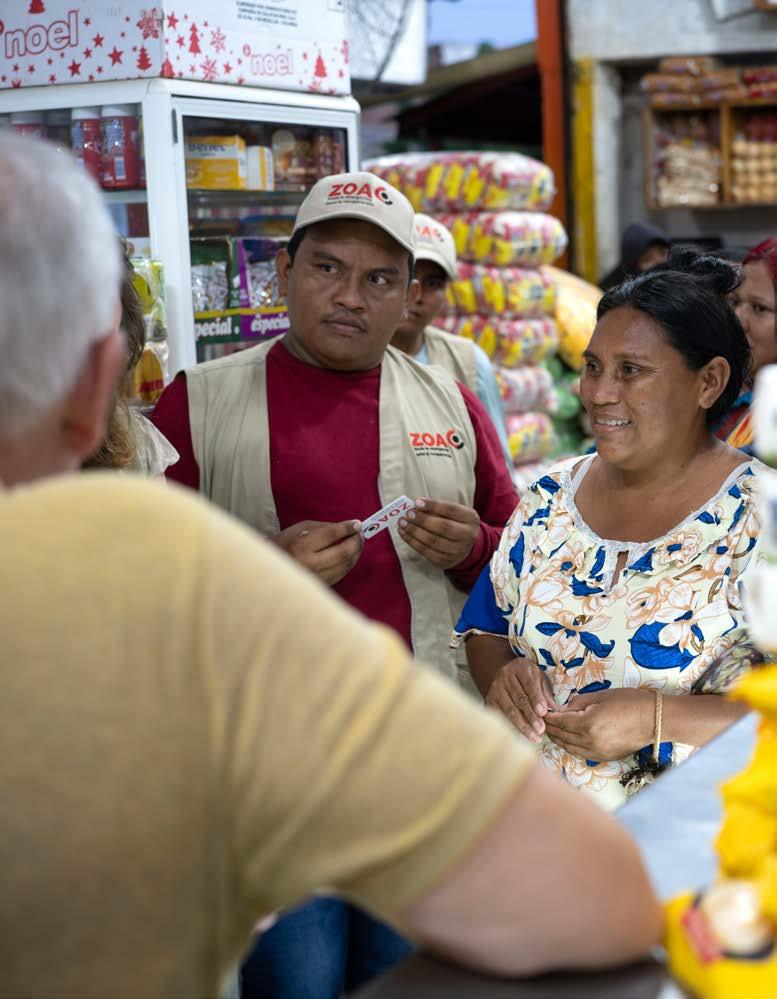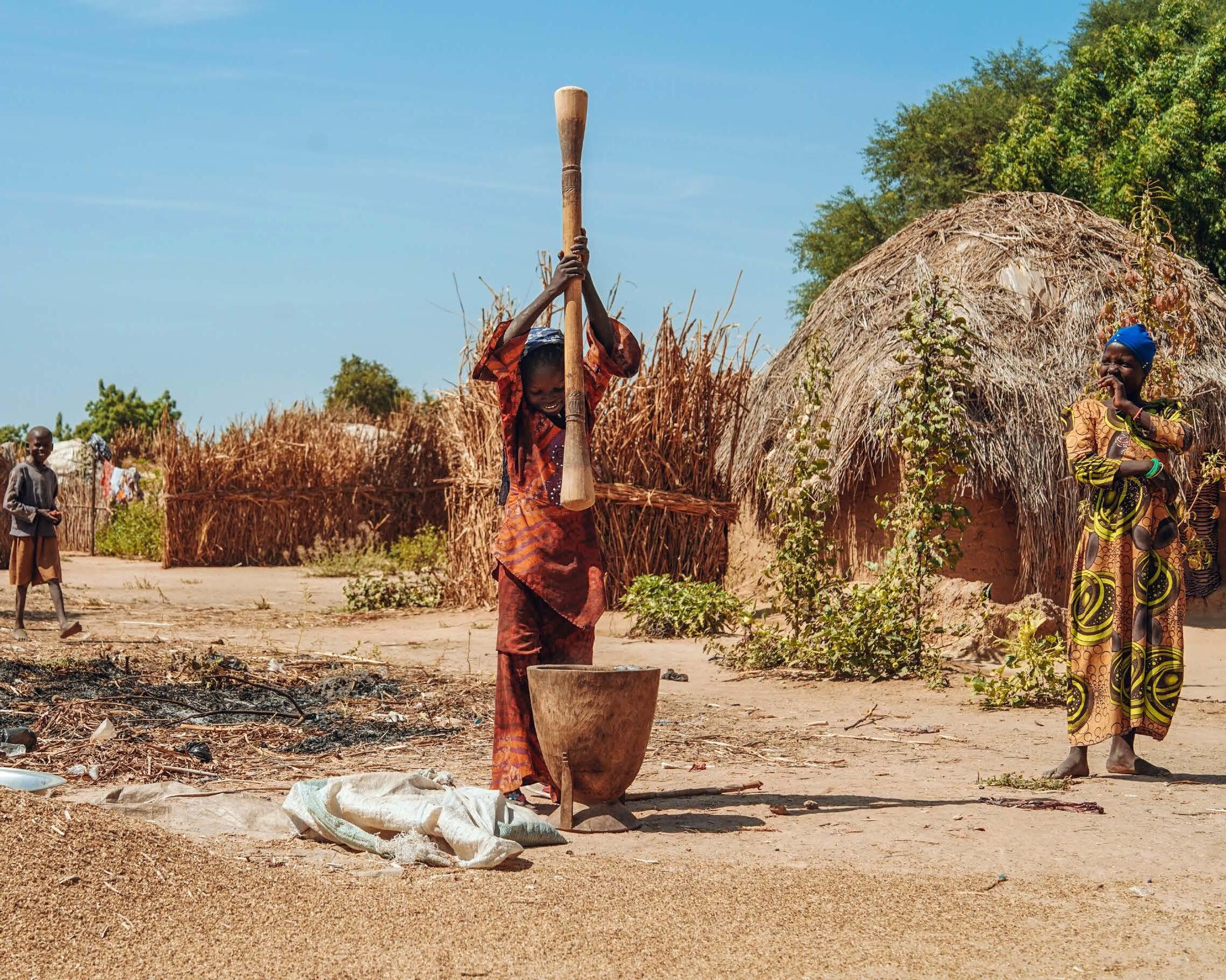
3 minute read
Impact of our work in 2022 FOOD SECURITY AND LIVELIHOODS
from Annual Report 2022
by ZOA
People in fragile, conflict-affected contexts are twice as likely to be undernourished as those residing in other developing countries. Climate change and the continued increase in forced displacements further exacerbate food insecurity and livelihood challenges. ZOA provides food assistance in emergency situations, preferably through distribution of cash or vouchers. During the recovery phase, ZOA supports people in building sustainable livelihoods. We help communities increase agricultural production and access local markets to generate income.
Colombia
Advertisement
Emergency food assistance programmes in La Guajira
Hundreds of thousands of migrants and host community members in Colombia’s La Guajira region are – or are at risk of – experiencing food insecurity. The region suffers multidimensional poverty and ongoing natural disaster risks. The Venezuelan migration crisis also significantly impacts the area due to the shared border.
ZOA has been working with the World Food Programme (WFP) since 2021 to deliver emergency food assistance to vulnerable indigenous communities in La Guajira. We deliver up to 30,000 food kits (323 metric tons of food) every month to more than 100 remote, indigenous Wayuu communities. Based on this challenging project’s success, ZOA, as an implementing partner for WFP, launched two emergency food assistance programmes in La Guajira in 2022. When flooding cut off all access to the northern tip of the peninsula in October 2022, indigenous Wayuu communities in this region faced more than a month of isolation, with no access to food or fuel supply chains. ZOA led a multiagency response to provide emergency food and hygiene kits to 4,549 individuals and distributed 1,135L of fuel. Following an outbreak of whooping cough that killed 23 children in an extremely remote indigenous Kogui community in the Sierra Nevada mountains, ZOA led a 3-month emergency food distribution project to bolster health and reduce malnutrition. In the absence of road access, 1,420 food kits were delivered monthly by 120 mules.
Ethiopia
Ensuring food security by supporting new businesses
Ethiopia is reeling from ongoing conflict, violence, and climatic shocks. Over 20 million people desperately need immediate humanitarian assistance. The country’s economy is highly dependent on agriculture, yet a mere 5% of the land is irrigated (with the worst drought on record as a major contributing factor) and crop yields from small farms are insufficient. To compound matters, market linkages are weak. ZOA’s programmes are designed to improve food security and build (household) resilience. In Gambella in 2022, we helped refugees and host communities establish new businesses, earn income, and improve their household food security. We created 14 new businesses (such as milk processing and sales, barber shops, and bakeries) and provided employment and income for over 350 community members. To kick-start new businesses and agricultural production, we distributed improved seeds, supplied 622 dairy cows to mothers residing in refugee camps, and 2,519 goats to 1,360 beneficiaries. Notably, almost one-third of dairy business owners retained milk for household consumption and almost two-thirds sold milk on a daily basis, earning greatly needed funds for their families. ZOA’s intervention contributed to improved food security and nutrition by improving agricultural production within the refugee camp, diversifying income streams, and strengthening value chains.
Dr Congo
A holistic approach to fighting food insecurity
2022 revealed deteriorating humanitarian conditions in certain areas of The Democratic Republic of the Congo (DRC). Conflict and hunger fuel one another. Insecurity, the main driver of population displacement, spread across several provinces, resulting in 5.5 million IDPs at the end of 2022. Food insecurity continues to grow in DRC: a staggering 26.4 million people are projected to become acutely food insecure in 2023.
Despite these challenges, ZOA is committed to promoting the resilience of smallholder farming systems through an integrated and holistic approach that focuses on empowerment and collaboration within the household to achieve the vision of combating food and nutrition insecurity. In 2022, ZOA’s food


a 40-year-old
Nigeria
Cash assistance, cooked meals and gardens
Due to persistent violence, over 2.5 million people were forced to flee their homes in Northeast Nigeria. Most remained internally displaced – and living in garrison town camps – at 2022’s end. Notably, Borno State hosts 55% of IDPs. The prevalence of acute food insecurity is high: reaching famine-like levels during the hunger period (July – October) and leaving half a million children severely malnourished.
ZOA works diligently to improve food access and build self-reliance while we continue to welcome IDPs to our programme locations. In 2022, we provided cooked meals to 2,850 new IDPs. We also supplied multi-purpose cash assistance to 19,800 individuals over a 10-month period. Every individual received cash on a monthly basis to meet their immediate food needs. Motivated by cash assistance, 165 VSLAs – comprised of 20-25 people per group – were formed, saving 10% of their income while increasing access to finances. 1,000 households received inputs to establish micro-gardens to produce their own vegetables while accessing water from boreholes rehabilitated by ZOA. Also, 400 women received income-generating kits. ZOA’s integrated assistance enabled IDPs to meet their food needs while we endeavour to determine sustainable solutions.
security and livelihoods programme reached 6,255 households in DRC. Our food security strategy focuses on helping people recover their livelihoods and gain resilience through an integrated bottomup approach called “Integrated Farm Planning” (PIP). This approach is complemented by the development of agropastoral value chains, the promotion of income-generating activities, and Village Savings and Loan Associations (VSLA). Food security indicators are steadily improving in ZOA-supported households. The percentage of households living in the acceptable food consumption score class has increased to 22.8% (versus 18.75% in 2021) and the average monthly PIP household income has similarly increased.










